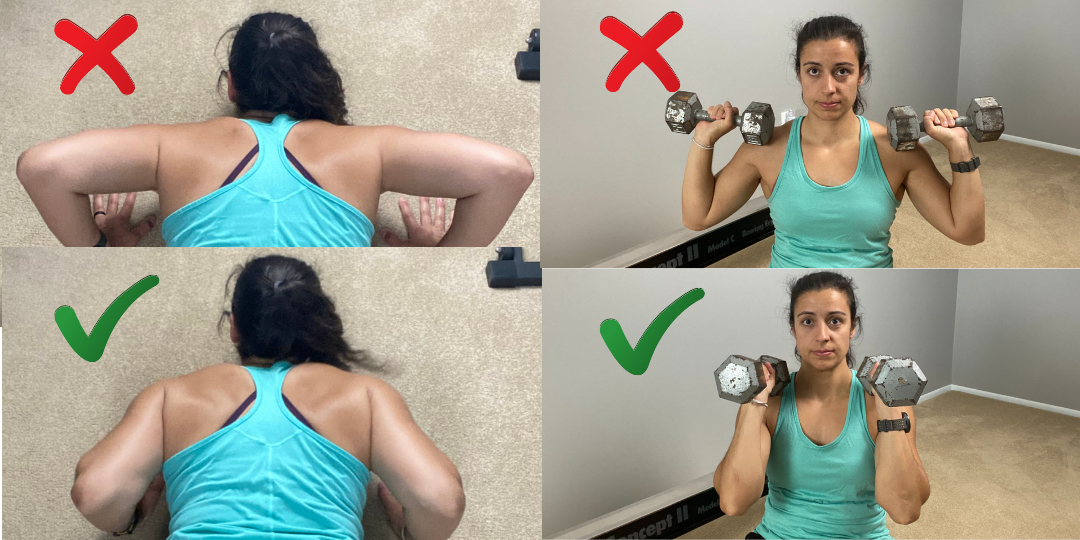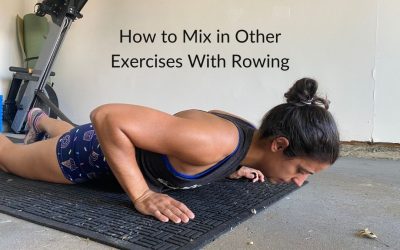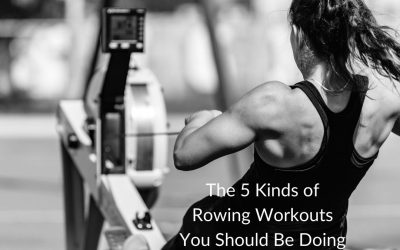Get Stronger to Get Faster with Pulling Exercises
Push, don’t pull!
While this is ENTIRELY true for the rowing stroke, you can’t deny that there’s some pulling going on once you get to the end of your drive. When you row consistently, you are doing a great job of working those pulling muscles. They are other ways to pull that you don’t want to neglect! The biggest being vertical pulling – think pull ups.
If you’re pulling enough with rowing, why should you do other pulling exercises? This post is going to answer that, as well as show you how to start doing these exercises and how to start incorporating them with indoor rowing.
Why Pull More?
If rowing is a pulling motion, why should you do more? Well, to get stronger for rowing of course! Strengthening your pulling muscles will help you hang off the handle to produce more power. You want your legs doing most of the work, but your upper body still needs to be strong to support that leg drive!
If you’ve been following this series of how different lifting movements can improve your rowing, then you’ll know I need to mention that the pulling motion is a functional movement. Functional means it’s practical. You need to be able to pull in your everyday life. Some examples are pulling something off of a shelf, getting out of a pool, bringing something closer to you, or hopping up onto any higher surface. All of these motions need those pulling muscles to do some work. To make things like this easier, you want to work your pulling muscles.
How: Pulling Exercises
While rowing is a horizontal pulling motion, it’s important not to forget about vertical pulling! While both motions are still pulling, working both angles ensures that you will be strong in your full range of motion.
Here are some examples of the pulling motion:
Horizontal
Bent Over Dumbbell Row
Seated Cable Row
Barbell Row
Ring/TRX Rows
Vertical
Deadlift
Pull Up
Chin Up
Lat Pull down
This certainly isn’t an exhaustive list (not even close!), as there are multiple variations to each movement I’ve mentioned above.
In both horizontal and vertical pulling, there are a couple of things that I recommend technique-wise. The first being that you should keep your elbows close to your body. With horizontal pulling, this means the elbows go back, instead of out to the side. In vertical pulling, your elbows will go down in front of you instead of out to the side.

It’s also important to use your core to brace as you do these movements. This helps protect your lower back from experiencing any pressure it doesn’t need to. Bracing is a lot different than holding your breath or sucking your belly button in. In order to brace properly, you want to think of your core like a soda can. The outside of the can is like your midsection, with your pelvic floor and diaphragm on the bottom and top respectively. To brace, you want to push out in all directions in your midsection, while bringing up your pelvic floor. If you hold your breath during the working portion of the exercise, that adds more of a bracing effect.
As with most strength building motions, it’s important to be in control of the weight you’re using. That may mean going lighter and slower when just starting out, and that’s ok!
Incorporating Pulling Movements
As with any strength building exercises, one way to start incorporating them into our workout routine is with a separate strength program. Finding a strength program from a certified coach that incorporates full body training will likely have a pulling component already built in.
You can also get stronger by incorporating resistance training in your rowing workouts. This means finding a plan that has you getting off the rowing machine to do exercises, hopping back on, and then continuing to alternate in different ways. Programmed correctly, this can also get you stronger. Keep in mind that if you do the same workout over and over, with the same weight, this won’t get you stronger in the long term. It may in the short term, but you need to progressive build in weight, reps, sets, etc in order to continue to get stronger.
How to Use Stroke Rate to Your Advantage
Whether you row in your garage or in a gym, there’s a number on that monitor that you should be paying attention to. And that’s your stroke rate! Most people are only concerned about the split that they are pulling. While that number is very important, it shouldn’t be...
How to Mix in Other Exercises With Rowing
Many people can be satisfied with workouts that only involve rowing on the rowing machine. However, even I can admit that can get boring after a while. If you’re going to start mixing in other movements, it’s good to keep a couple of things in mind. I need to throw...
The 5 Kinds of Rowing Workouts You Should Be Doing
It’s easy to get sick of the same old, same old workouts week after week. Looking to mix it up? Here are the 5 different kinds of rowing workouts you should be doing. ROUNDS FOR TIME This is an easy format to start mixing in other movements. These can be bodyweight...



